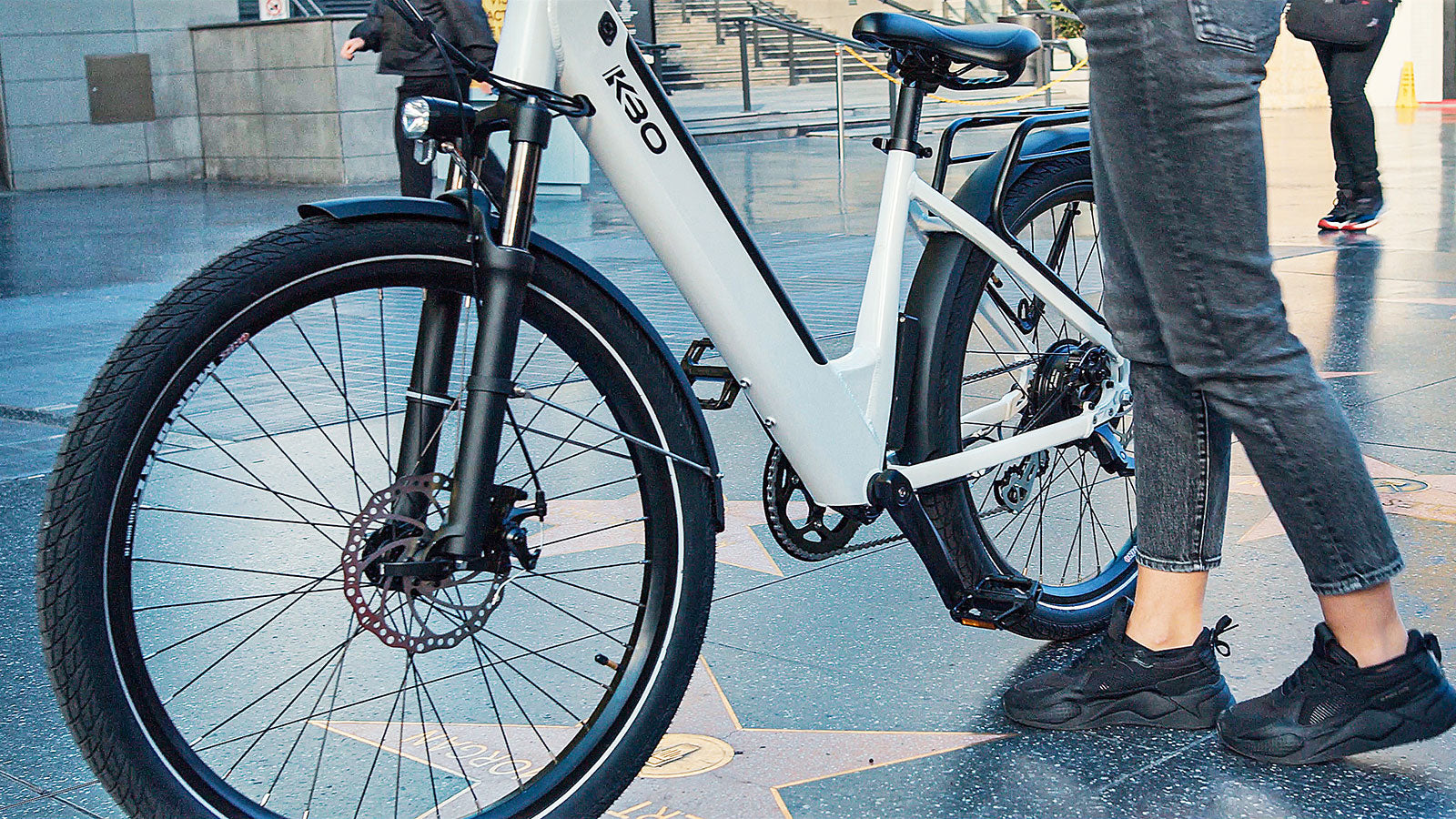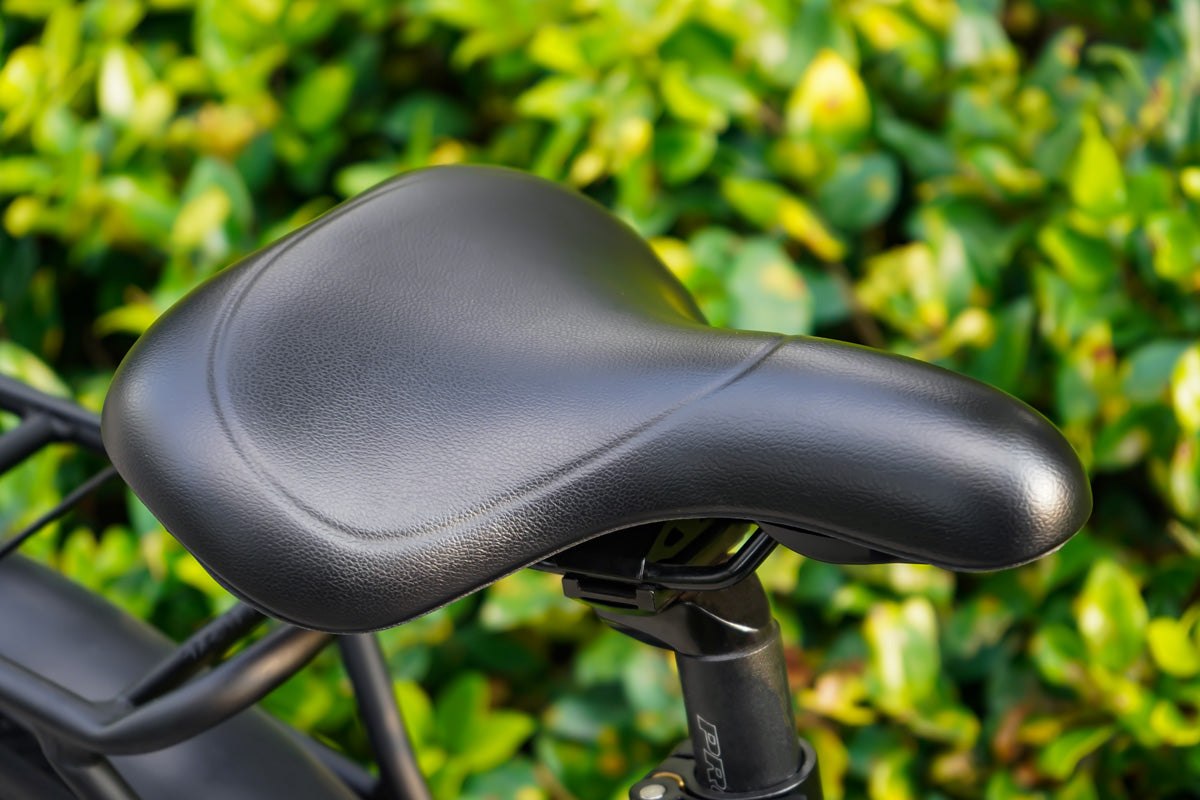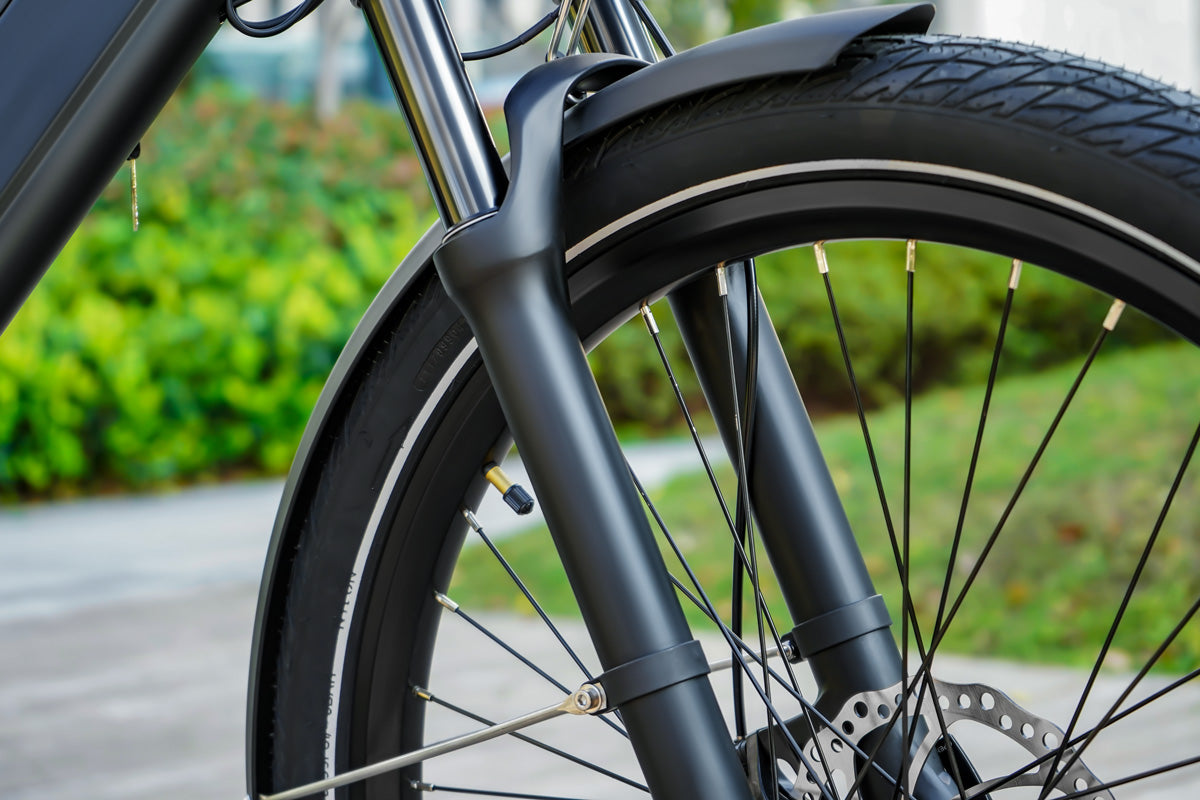All You Need To Know About Electric Bikes Suspension | KBO Bike
On rooty, bumpy trails or potholed roads, bike suspension improves control, grip, and comfort. It is one of the elements that add to your enjoyment of riding. Riding without a good suspension is exhausting since your body is attempting to keep the cycle steady. But, if your bicycle has a suspension, it accomplishes the work of stabilizing the ride. Suspensions are systems that suspend the bike and the rider in a way that helps them to cushion the effect of the jaggedness of the terrain on which they are riding. Essentially, these suspensions are components of mountain bikes. However, it is also commonly used on hybrid and commuting bicycles. There are different uses and combinations of suspensions. They include front suspension, rear suspension, seatpost suspension, suspension saddle, and full suspension.

E-bikes with only the front suspension are the hard-tails, while those with both front and rear suspension are the full-suspension types.
Apart from giving the rider comfort while riding, ebike’s brake and suspension systems help improve traction and safety by ensuring that either one or both wheels are in good contact with the ground.
Seatpost Suspension
A seatpost is typically a tube that protrudes upwards from the bicycle frame to the saddle. The length of protrusion of the seatpost is usually adjustable, with a mark indicating what the minimum insertion (or maximum extension) is. The seat of the KBO Breeze Step-Thru is a sturdy and comfortable saddle that reduces the feeling of bumps while riding on the road. You could move the saddle up and down, as well as back and forth to make adjustments to fit your comfort. Aluminum, carbon fiber, steel, titanium, and aluminum wrapped in carbon fiber are materials used to manufacture these posts. Seatpost suspension gives the saddle allowance to move up and down using either a telescoping or parallelogram mechanism. There is usually a spring, an elastomer, or even compressed air and probably a damper which will help provide insulation against bumps on the riding terrain. Often, seatpost suspension comes in smaller diameters, just like the seat post of the KBO Hurricane that has a diameter of 27.2mm compared to its length of 350mm. More often than not, it is necessary to use shims.

E-bike seat suspensions are of various designs which allow the seat to maneuver in numerous paths during the compression. The piston-style suspension seat post is the most simple variety of Seatpost. It uses a sliding post with spring pressure which will be changed by adjusting a threaded insert within the bottom of the post to regulate the preload on the spring. All piston-style Seatpost move up and down during motion at the slope of the seat tube. Because of the movement of these parts, all piston-style suspension seat posts suffer from small rotations around the axis. These will cause the seat to wiggle side to side slightly. Piston-style seat posts with springs that are not preloaded or other designs with poor tolerances also can have slight up and down wiggle within the seat within the axis. Upgraded versions of the piston-style seat post have reduced all forms of jiggle. Also, Seatpost that have built-in pistons that are adjustable are now available.
On the other hand, Parallelogram suspension Seatpost uses dual linked bars that join the saddle clamp to the post. Variations in the arc directions bring about seat posts that are built for several different things. An e-bike with tiny wheels that are moving fast or climbing up will be better suited for a rear arc, while a forward movement would be best suited for much larger wheels that are moving downhill or moving at much slower speeds. Some seat posts are designed with uneven links creating a non-parallelogram, so the arch approximates a line when compressed. Various designs are implemented to tension the seat post. Some use elastomers, while some use pistons. The size, shape, and position of those elastomers and pistons vary by brand and model also. A number of the elastomers are adjustable by stacking different combinations of elastomer rings to make a selected profile and ramping the suspension. Others have adjustable gas pressure or ways to alter the profile of the compression.
Full suspension
Full suspension in e-bikes is the type of suspension that has two pieces: the front triangle and the rear triangle. These two pieces are connected by pivots that are on the e-bike frame. This type of design facilitates independent movement of the e-bike and affords the rider a smoother ride. With the movement being controlled by the shock absorbers of the suspension. Full-suspension bikes are heavier than hardtails. Although while this disadvantage exists, it only has a minor impact. There is good support from the durable motors that will ultimately make you ignore the burden of the load. Full-suspension e-bikes usually have many technologies in place, which is why these kinds generally require a little more maintenance.

Full-suspension e-bikes typically offer the rider several benefits. An example is the Aluminum alloy front suspension fork of the Commuter Electric Bike KBO Breeze that has a good damping effect that reduces the feeling of bumps when riding on rough roads. Full-suspension bikes also have rear shocks, stable frames, grippy tires, and a strong e-drive. They are the kinds of e-bikes that take you through almost every type of terrain safely. Having full suspension allows you an easy ride in rough terrains, assures you more safety, speed, and more comfort, as well as more traction.
By adjusting your full suspension to suit your body weight and your riding style, you will give the e-bike the allowance to work appropriately. This will also ensure that the e-bikes give a maximum amount of performance in return.
In setting up your suspension accurately, you should pay attention to the manufacturer's guidelines. These guidelines help you adjust your full suspension e-bike's front and rear shock units to carry your body weight. Air pressure or spring preload are added to the shock unit to help in the suspension adjustments. Ultimately, this produces the suspension's sag (the measured amount of compression of a suspension while the rider's weight is on the bike. If you want to have a nice full-suspension e-bike, the fork and the rear shock are very essential. These go a long way to determine the performance. When you have both of these in your e-bike, they can make bumps disappear and will likely stay neutral when pedaling. New-age e-bikes are often constructed using either aluminum materials or carbon fiber materials. The frame of your e-bike is the core of it. For this reason, you should always pay attention to that. You can always upgrade components of your e-bike over time, but a good frame will stay right by you for a long time if you get a good one from the beginning.
If you want a high-quality full-suspension electric bicycle, you must get one with a fork of excellent quality. Typically, suspension forks are telescopic. They have pressurized air or a coil that helps to supply suspension to the frame. With forks of excellent quality, the rider can adjust the compression and rebound settings to match their weight and riding style. The front suspension of the e-bike, or the fork, receives a majority of the rider's weight. The fork consists of stanchion tubes (the inner tubes) that glide in and out of the fork-lowers (the 'outer tubes'). The inner and outer tubes are attached by a brace (the lower arch). The structure of the e-bike is designed in such a way that the front wheel is joined to the fork lowers, while the stanchions are attached to the head-tube of the frame through what is called the fork steerer.
The rear suspension has almost the same characteristics as the front suspension, including the adjustments. The rear shock is located under the rider, lying in between the front and rear triangles. The shock is located in a pivot system, which uses linkages to facilitate the shock movement within the frame. The rear shocks have two telescopic tubes that glide into each other and then compress under load. The tubes are engaged by what is called the shock body. Similar to the front suspension, rear shocks can be air or coil sprung, it can come in different shaft diameters. It can also be tuned and adjusted to suit the rider's demands.
Looking at the variety of pros and cons of a specific suspension system might be deceptive. Regardless of the benefits and drawbacks of any suspension type, the most essential factors to consider when selecting your favorite e-bike are your riding style, riding circumstances, and budget.

















































